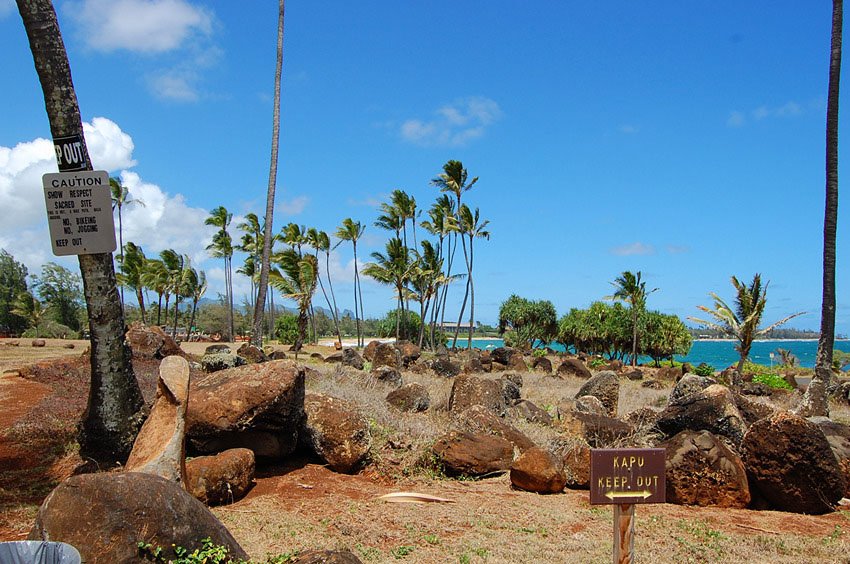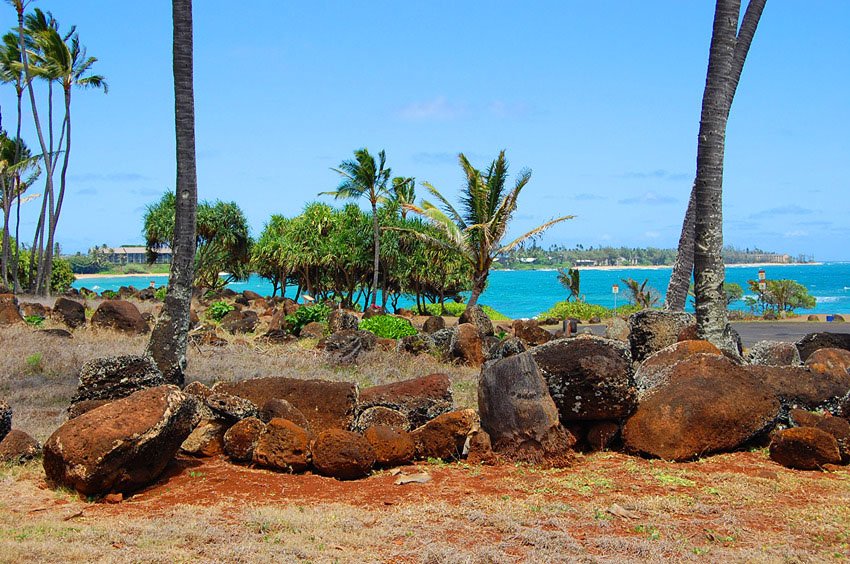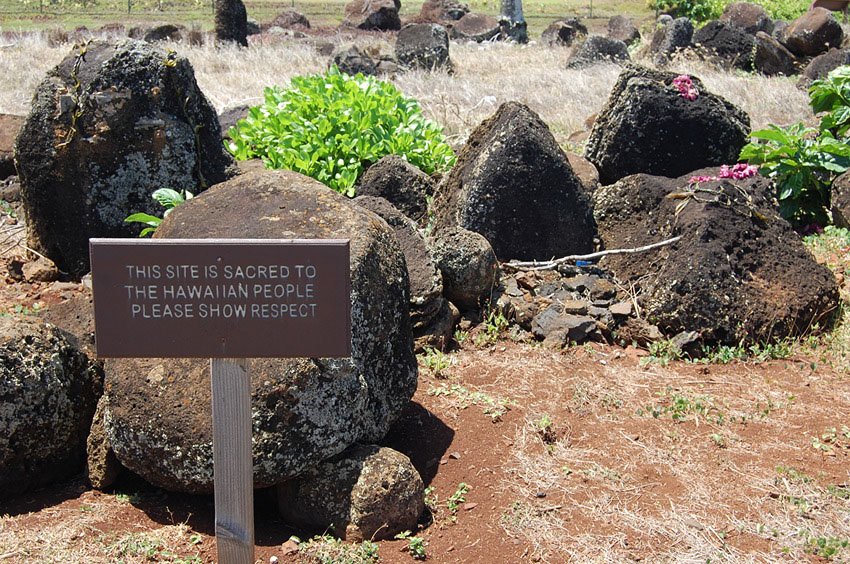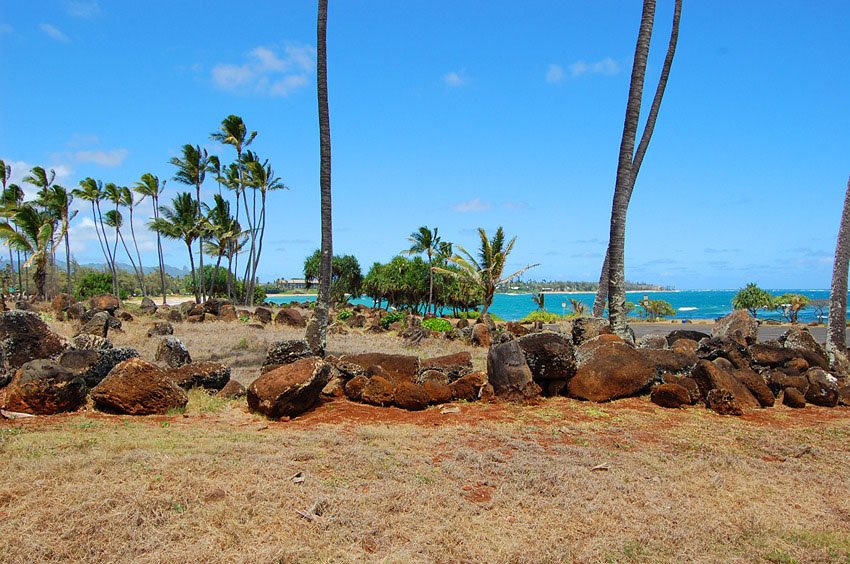Hikinaakala Heiau
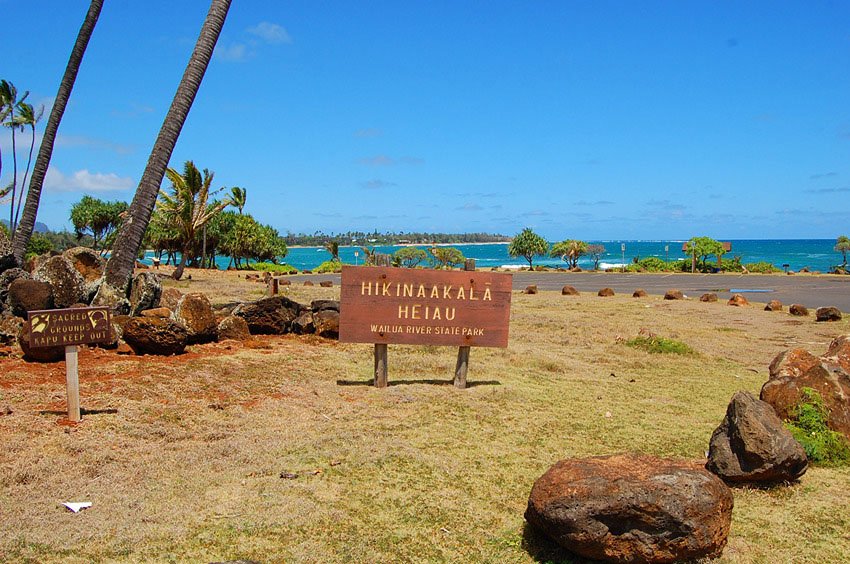
Hikinaakala Heiau, meaning "rising of the sun," is one of Kauai's most sacred ancient temples. Located near the mouth of the Wailua River, this historic site once hosted ceremonial chants and prayers to greet the dawn. Though only the foundation remains today, the heiau's spiritual legacy and commanding sunrise views still draw respectful visitors to its revered grounds.
Hikinaakala Heiau, Kauai
Hikinaakala means the "rising of the sun" in the Hawaiian language. Since it is located on Kauai's east shore, it offers a nice view of the sunrise. In ancient Hawaii, the dawn was celebrated here with chants and prayers.
Located at the northern end of Lydgate Beach Park next to the mouth of the Wailua River, Hikinaakala Heiau encompasses about one acre of land. The heiau's walls are believed to once have been 6 feet (1.8 m) high and up to 11 feet (3.4 m) wide. However, in the late 1800s and early 1900, after the traditional Hawaiian religion was abolished, many of the rocks were taken away or used in roadbeds. Today, only the heiau's foundation stones remain.
The exact date when the heiau was built is unknown, but it is believed that it was as early as the 1300s. The heiau's large size suggests that it used to be an important site. A row of wooden ki'i (images), known as ka pae ki'i o Wailua, used to stand outside the heiau's stone walls facing the rivermouth. These ki'i statues watched over the site and were said to sway and tilt by the waters of the ocean.
Key Features of Hikinaakala Heiau
- Sunrise ceremonies: Ancient Hawaiians greeted dawn here with prayers and chants
- Historic temple site: Believed to have been built as early as the 1300s
- Large sacred complex: Once featured ki'i (carved images) guarding its walls
- Location significance: Positioned near the Wailua River and Lydgate Beach Park
- Cultural respect: Visitors are advised to stay off the central heiau platform (kapu)
Frequently Asked Questions
Why is it called Hikinaakala?
"Hikinaakala" means “rising of the sun” in Hawaiian, and the site was used for dawn ceremonies.
What happened to the heiau's original structure?
Many stones were removed in the late 1800s–1900s after Hawaiian religious practices were abolished. Only the foundations remain today.
Where is Hikinaakala Heiau located?
It is at the north end of Lydgate Beach Park, next to the Wailua River. Drive to the end of Nalu Road and park nearby.
Can I walk into the center of the heiau?
No. The center is kapu (forbidden) and should not be entered. Please show respect when visiting.

















